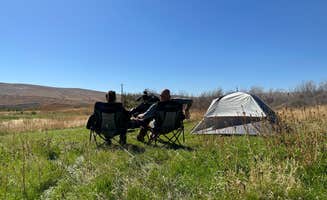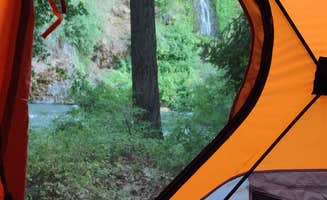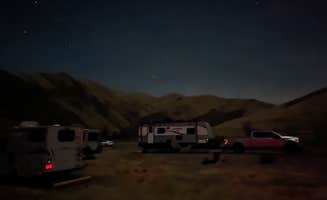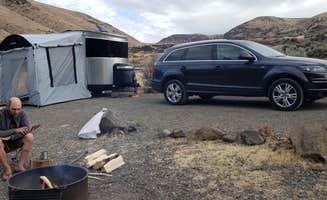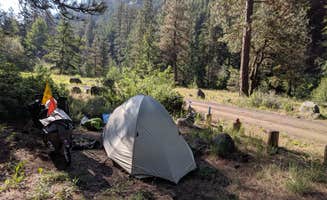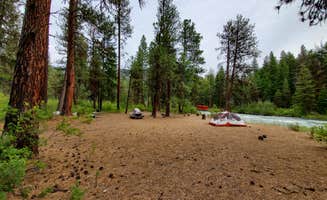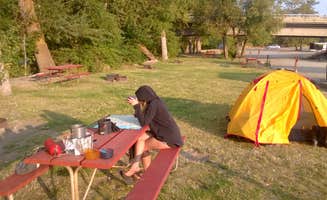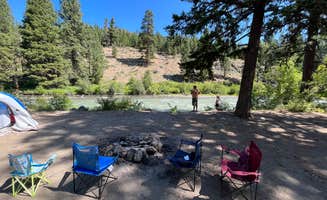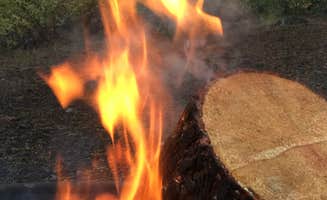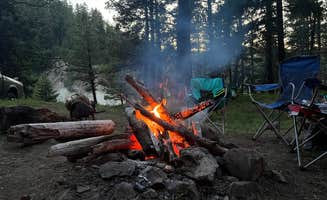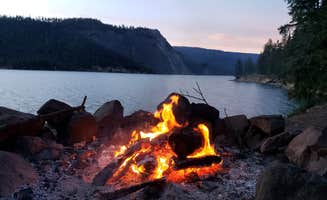The Naches area sits at the transition between central Washington's arid lowlands and the eastern slopes of the Cascade Mountains. Elevation ranges from 1,400 to 2,500 feet across most camping areas, creating varied microclimates throughout the region. Campgrounds along Highway 12 and the Naches River corridor remain open primarily from May through September, though higher-elevation sites may have shorter seasons due to mountain snowpack and access considerations.
What to Do
Fishing access points: The Tieton River at Willows Campground offers accessible fishing opportunities directly from campsites. "It is next to the river and a short drive to Rimrock lake. Great fishing and boating at the lake," notes one camper, adding that temporary water conditions might affect clarity: "The river was muddy when I was there but I heard that is not normal and was caused by flash rains or snow melt."
Wildlife observation: Bird watching and larger wildlife sightings are common in the Yakima River Canyon area. One camper at Big Pines Campground reports: "Right on the Yakima river, fishing, boating, floating the river. Watching Elk, Bighorn Sheep, Eagles and Pelicans." Spring and early summer provide the best wildlife viewing opportunities throughout the canyon.
Water recreation: Floating and rafting the Yakima River are popular summer activities. The Roza recreation area serves as a common take-out point for floaters. "This is a BLM recreation area... The river is cold but very clear/clean," notes a visitor, adding that it sits on "a calm bend in the river. Great location and 20 min to Yakima or 15 to Reds Fly Shop."
What Campers Like
Riverfront sites: Many campgrounds offer direct river access with varied water features. At Willows Campground, one camper describes their experience: "A ginormous site right on the Tieton River (seriously, you could fit like 4 tents on this site). Two walkdowns directly from your site to the river, giving you a (very small) private 'beach.'" The river noise provides natural white noise that helps mask road sounds.
Natural surroundings: The contrast between desert and riparian zones creates unique environments. At Umtanum Campground, campers appreciate the diverse ecology: "The raptors and songbirds are splendid. We saw Bighorn sheep on the hill, big rock squirrels, wild turkeys with babies, and fish." The surrounding hiking trails allow further exploration of these transitional ecosystems.
Waterfall views: Some riverside camping spots offer views of natural water features. One camper at Windy Point Campground shares: "The river is so beautiful with the waterfall cascading down into the river directly across from the campsite. There is a shallow part near the shoreline where the kids had a great time playing in the river."
What You Should Know
Road noise: Highway proximity affects some campgrounds. At Hause Creek Campground, visitors note: "The sites were a little over grown when we were there. The pit toilets were clean... This campground sits right off of hwy 12." Another camper adds: "The river was running high while we were there, so it drowned out most of the road noise."
Limited amenities: Most Forest Service campgrounds provide basic facilities. "There is no running water, but there is a water well pump (manual pump) that gives clean drinking water," reports one Willows Campground visitor. Vault toilets are standard, with maintenance quality varying by season and visitation levels.
Seasonal availability: Weather and river conditions affect campground operations. One camper at Big Pines notes: "BLM used to let camping be free during the off season but now charges $15 per night, no matter the site type." Winter camping options exist but with reduced services and potential access challenges due to snow at higher elevations.
Tips for Camping with Families
Water safety considerations: River access requires supervision. A Windy Point camper reports: "The river itself is wide and very fast moving. The campsite we stayed in was fairly close to the next one, but we were camping with friends in the next one so it was fine." Parents should note that many rivers run cold even in summer due to mountain snowmelt.
Recreation options: Some campgrounds offer additional activities beyond water recreation. A visitor to Yakima Sportsman State Park shares: "The surrounding grounds is a park with playground equipment and a huge field. There are tons of hikes and a small pond to explore...with turtles!" These features provide alternatives when river conditions are unfavorable.
Site selection: Choose sites based on specific family needs. One camper advises: "Spot 4 is very spacious, with a more private beach area. Bathrooms were clean and stocked. This campground is right off the highway, so you do hear occasional road noise. The river is pretty loud though."
Tips from RVers
Hookup considerations: Services vary significantly between public and private campgrounds. At Squaw Rock RV Resort, an RVer notes: "Single utility service serves two sites. The water spigot has a Y splitter to share a single water connection. Power has one 30 Amp and one 50 Amp socket. The first rig arriving gets to choose which one they want to use."
Site access challenges: Not all campgrounds accommodate larger rigs. "Not all sites have sewer hookups," reports a Squaw Rock visitor. "Know what you are getting!" Public campgrounds typically offer fewer services, while private resorts provide more amenities at higher costs.
Connectivity limitations: Cell service is minimal throughout the region. "You're in a valley with NO cell service. Wi-Fi in the park is non-existent. There's a weak signal near the office," shares an RVer at Squaw Rock Resort. Travelers requiring connectivity should prepare alternatives or plan to use services in nearby towns.


